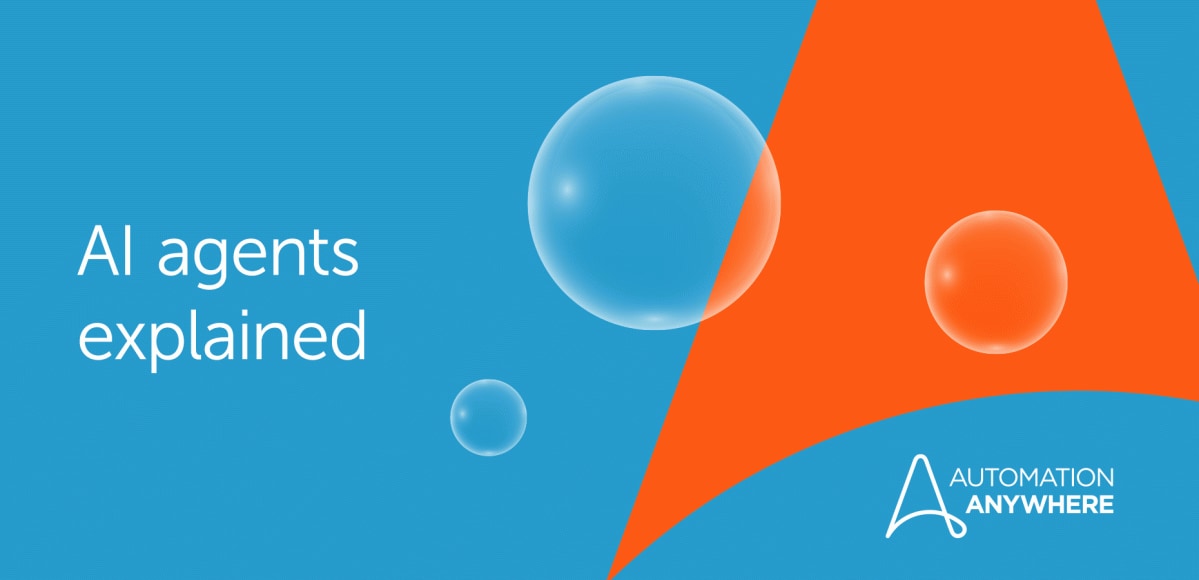- Login
- Search
- Contact Us
-
Have a question? Our team is here to help guide you on your automation journey.
-
Explore support plans designed to match your business requirements.
-
How can we help you?
-
- /AI
AI Without the Hype From pilot to full deployment, our experts partner with you to ensure real, repeatable results. Get Started
- Automation Anywhere AI
-
- Products
Platform Features
- Agentic process automation (APA)
- Robotic Process Automation (RPA)
- View all Products
-
- Solutions
Featured Agentic Solutions
Accounts Payable Invoice automation—No setup. No code. Just results. Accounts Payable
Customer Onboarding Scale KYC/AML workflows. Customer Onboarding
Customer Support Keep queues moving, even at peak load. Customer Support
Healthcare RCM Revenue cycle management that runs itself. Healthcare RCM
- Resources
Get Community Edition: Start automating instantly with FREE access to full-featured automation with Cloud Community Edition.
Featured
 Named a 2025 Gartner® Magic Quadrant™ Leader for RPA.Recognized as a Leader for the Seventh Year in a Row Download report Download report
Named a 2025 Gartner® Magic Quadrant™ Leader for RPA.Recognized as a Leader for the Seventh Year in a Row Download report Download report- Become an Expert
- Developer Tools
- Get Support
- View all resources
-
- Partners
Find an Automation Anywhere Partner Explore our global network of trusted partners to support your Automation journey Find a Partner Find a Partner
- Find a Partner
- For Partners
-
Blog
What Are AI Agents? (And Why Is Everyone Talking About Them)
The breakneck pace of announcements and innovation in AI has everyone asking, "What's next?" At Automation Anywhere, we've witnessed a tangible shift in the business landscape as companies are eager to integrate generative AI into their operations—particularly within the domains of finance and service operations.
At the same time, organizations are certainly keeping their ears to the ground to be ready for the next wave of advancements in AI for enterprise automation. Which is why I want to share insights from the frontier, the bleeding edge of AI and automation, with you today. I want to zero in on AI agents—what they are, their evolution, and—what matters most—their groundbreaking potential.
What are AI agents?
At this year’s Imagine, we introduced AI agents built on our AI + Automation platform. Simply put, AI agents combine the cognitive capabilities of generative AI with action and automation across enterprise systems and data. They are designed to go a level beyond the previous generation of Intelligent Automation that integrates machine learning (ML) by being able to dynamically execute particular tasks to complete a defined goal.
What this means in practical terms is that AI agents can use the cognitive capabilities of new generative AI models to make decisions, learn from data, interact with humans through natural language, and ultimately take action to achieve their goals.
As this technology continues to evolve, AI agents represent a means to achieving truly autonomous automation where an agent will have a high degree of flexibility in formulating a plan and executing a broad set of tasks to complete a complex goal. Today though, the biggest opportunities for AI agents are found within well-defined tasks that are orchestrated as part of a larger end-to-end business process. These are often referred to as agentic processes or AI-agent-enabled processes.
Wait, what are we talking about? Deciphering terminology
Definitions of evolving technology advancements can be a moving target, and definitions of new technologies and their applications certainly have their limitations—especially when new tech jargon gets peppered in everywhere.
AI agents make a lot more sense when the terms associated with them, and that we use to describe them, have some clarity and context. Here are some of the terms to know:
- Agent: In AI, an agent is an entity that takes in data, makes decisions, and performs actions (based on those decisions) to achieve specific goals.
- Agentic: The term "agentic" is used to describe AI-powered automations, systems, or assistants with varying levels of autonomy, reasoning, and adaptability. Agentic is useful because it’s descriptive instead of definitional (agent/not agent).
- Agentic Process Automation: This is the combination of process orchestration across multiple technologies with AI agents embedded within the process for particular sub-steps or decisions of a larger process.
- Autonomous: In the context of AI agents and agentic AI, autonomous refers to the capability of these systems to operate without pre-programmed paths or direct human involvement. There are varying degrees of autonomy when it comes to AI agents today.
- AI System: This refers to the combinations of LLMs or generative AI models with other programmatic elements and technologies and can be quite broad in describing anything beyond just the AI model alone.
- AI Assistant: Assistants typically refer to any AI system designed for individual user interaction, which usually includes the use of AI agents. Many new assistants today are based primarily on natural language interaction, but not all are. In our own products, Automation Co-Pilot is an AI-powered assistant for automation that helps users get work done.
How do AI agents work?
AI agents have common components, starting with a semantic engine, which is usually a large language model (LLM), for example, Anthropic’s Claude 3.5. It's called an 'engine' for a reason—this is what an AI agent literally runs on. The semantic model/LLM foundation provides the ability to reason, plan, and reflect. It also provides a conversational interaction layer with users when needed for things like additional clarification or approval of work.
The use of and access to data is another common element of AI agents, so they have relevant and up-to-date context for achieving their goals. Often, this access to data comes in the form of a retrieval augmented generation (RAG) capability, where semantic search can be used to locate relevant data from a database to feed to the model for context. Other approaches can also be used to help supplement the AI model’s knowledge, such as more targeted queries or extraction of specific data from systems as needed.
Another key characteristic of agents is a prescribed architecture that leverages an LLM for things like planning and reflection. This underlies the dynamic or autonomous nature of AI agents, enabling planning—which is essentially outlining which steps it wants to take—and reflection— which is assessing how well it has done to inform what it should do next.
Action really is at the heart of everything, though: this is how AI agents can actually get things done. Often referred to as ‘tool use,‘ empowering agents with actions allows them to connect to systems, run automations, search for information, and more. This is where the automation layer that agents are built on becomes critical because it gives them the most robust set of actions possible for them to complete their goal.
As they move through their tasks, agents generate information that is needed to track their progress and help them improve over time. With access to this context, they can adjust their plans and ensure they are moving efficiently towards achieving their goal. For agents, this access comes in the form of ‘memory’ or a data store that contains relevant history and context for the particular execution but also for previous executions from which they may be able to learn.
The backdrop: Where did AI agents come from?
Literally putting AI to work, AI agents represent a major step forward in applying AI to business and personal automation.
Today’s AI agents are a culmination of decades of progress across both AI and automation, and are certainly not a new concept for those who have been following technology. Those who have been looking towards a future with artificial general intelligence (AGI) have discussed many of the same human-like concepts, like reasoning and action, that are now being demonstrated for more narrow objectives with AI agents.
Going all the way back to the 1980s, IBM’s Deep Blue supercomputer even started to show some of the early potential of AI applied to real-world problems as a chess impresario. Since these early days, AI has evolved significantly, being able to tackle more and more complex problems and becoming more ubiquitous in the form of more targeted ML models throughout all technology. The biggest unlock for the current era of AI agents, though, was the advent of the LLM, which demonstrated truly generalized reasoning capabilities and made the current AI architectures possible.
While AI has been advancing over the decades, so has automation and, specifically, business process automation. From its early days of highlighting programmatic techniques like robotic process automation (RPA), it has evolved into a suite of technologies that can orchestrate varied and complex business processes end-to-end. This requires the incorporation of a wide range of technologies, from APIs to UI automation to ML/AI, as well as the ability to interact with and be guided by interaction with people when necessary. Given AI’s already prominent and growing role within this new area of business process automation, it is not surprising that generative AI and AI agents are now being rapidly brought into this domain.
It’s from this launch pad that AI agents are now taking off. Harnessing the power of new generative AI, agentic process automation (APA) takes automation into a new era, incorporating AI agents to complete previously impossible tasks.
The future: Why everyone’s talking about AI agents
It’s hard to overstate the transformative potential of AI agents and agentic process automation for organizations. On many basic benchmarks like coding or question answering, agentic systems have already been shown to easily outperform even the latest models alone.
When applied to real-world use cases in business processes, like troubleshooting a product issue or making a decision about a customer service request, their impact will be even more widely appreciated. At the same time, it is important to recognize that realizing all of this potential requires a strong foundation of trust, including security, privacy, data accuracy, human oversight, and robust AI governance.
In today’s rapidly evolving business environment, enterprise technology leaders cannot afford to ignore the potential that agentic process automation offers for them to transform processes and achieve the outcomes most essential to their business.
In the near future, expect to see AI agents and agentic processes as a driving force behind improved customer experiences, increased growth, operational efficiency, and higher employee satisfaction across nearly every industry. This is the future of enterprise automation, and there has never been a more exciting time to be at the epicenter of AI + automation in the new era of AI agents.
About Peter White

Peter White is the Chief Product Officer at Automation Anywhere.
Subscribe via Email View All Posts LinkedInGet to know the Agentic Process Automation System.

For Students & Developers
Start automating instantly with FREE access to full-featured automation with Cloud Community Edition.



